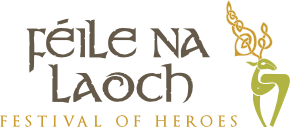An Irishman’s Diary
FRANK McNALLY, IRISH TIMES, 25th JUNE 2011
I STAND TO be corrected, and no doubt I will be.
But it is my belief that the River Sullane in West Cork is very unusual – perhaps even unique – among Irish waterways, in being male. You wouldn’t know to look at it that it was male: there’s nothing especially manly about it. It’s just that, in Irish, everything has a gender. And rivers, the Sullane excepted, tend to be feminine.
Less unusually, perhaps, the Sullane also carries a curse. The idea of rivers demanding their dues periodically – in the form of humans – is common in folklore. So it goes, supposedly, with this one, whose sinister reputation features in a poem, viz: “Mise an Sulán, fuar, fada, fireann/Anois an t-am, cá bhfuil an duine?” (“I am the Sullane, long, mean, masculine/Now is the time, where is the person?”)
The river is also the subject of a song, Banks of Sullane , which is performed hauntingly by that fine Dublin singer Niamh Parsons. It’s a tragic song too, albeit concerning loss of love rather than life. But although the Sullane is its recurring motif, the male narrator does not blame the river for his misfortune. No, his problem is another cold, long, masculine feature – the girl’s father.
As the would-be suitor puts it: “His presence to me was appalling/With his cross angry look and his frown/Which pierced through my heart like an arrow/On my way back to sweet Masseytown.”
Masseytown, for anyone taking notes, is a place on the edge of Macroom, through which the river (and possibly also the father-chased suitor) runs.
Anyway, I mention the banks of the Sullane here only because they will be the scene of a remarkable event later this summer, news of which has just reached me.
The precise location will be west of Macroom, in the Cork Gaeltacht village of Cúil Aodha, near where the river rises.
Which village is still synonymous with one of its former residents, Sean O’Riada. So to mark what would have been his 80th birthday on August 1st, the locals are having what could be loosely termed a party.
This is no ordinary party, however. Official named Feile na Laoch, or “Festival of Heroes”, it is held only once in a generation.
The last time was 1991. And although it may not be as long until the next – the plan is to stage another as part of the 2016 celebrations – this will be the first such event since a pageant led by a “flaming Galway Hooker” was reviewed by then Taoiseach Charlie Haughey (for the benefit of shocked American readers, a Galway Hooker is a type of boat).
This year’s festival will begin with a torch-lit procession on the last Friday of July, followed by a weekend of music, sport, culture of all kinds, and talk. The music will include Christy Moore, Martin Hayes, Louis Stewart, and Glen Hansard. The sport will include an under-16 football tournament. And as well as the O’Riada memorial lecture, the talking will include a public debate about how Ireland can get itself out of its current mess.
This all fits loosely into the “heroes” theme.
But the climactic event will be on Sunday evening when the Army Band leads a parade from the village to the local GAA pitch whereon, in 2004, the opening scenes of The Wind That Shakes the Barley were filmed.
There, “at 9.20 pm, as the sun goes down” (the organisers are optimistic that, earlier in the day, it will have come up) the “aeraíocht” is scheduled to begin.
An “aeraíocht” is defined by committee member, Conchubhar Ó Liatháin, as an “Electric Picnic, before electricity”. More particularly, this will be an all-night spectacle featuring five disciplines: story-telling, poetry, singing, instrumental music, and acting. Each discipline will have seven “heroes“: each hero having seven minutes to impress the audience.
Collectively, they will entertain the assembly until “dawn on Lá Lúnasa”. At which point, “as the sun rises over the valley” – and again there’s a sporting chance – an orchestra will perform Mise Éire , Ó Riada’s most famous work.
It is to be hoped that all this can take place without anyone falling in the river. But waxing lyrical, the organisers belive the event may harness for a good cause any supernatural powers the combined setting and music may have. And that “as Mise Éire became the sound track for a resurgent Ireland in the 1960s, it can inspire us once more to lift our hearts as we deal with our current difficulties”.
All events during the weekend will be free.
Those who can’t attend will be able to watch some of them live, online. In the meantime, more information about what promises to be one of the most extraordinary happenings of the summer is at feilenalaoch.com.
Original article online here (http://www NULL.irishtimes NULL.com/newspaper/opinion/2011/0625/1224299586728 NULL.html)















